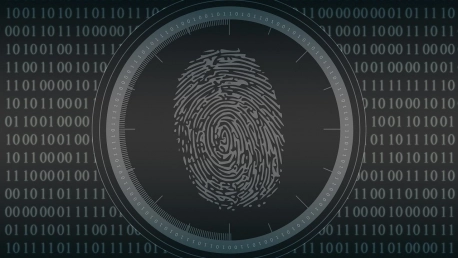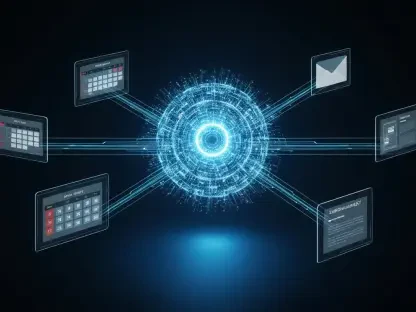The FBI is marking its 100th anniversary of the fingerprint lab, officially known as the Biometric Services Section within its Criminal Justice Information Services (CJIS) Division. This milestone commemorates a century of remarkable advancements and transformation in biometric identification, reflecting the journey from manual fingerprinting to the incorporation of sophisticated technologies like iris scans, palm prints, and facial recognition.
Historical Context and Evolution
Beginnings Under “Ident”
The FBI’s fingerprint lab started in 1924 under the name “Ident,” primarily focused on manual fingerprint recovery and matching. This period marked the inception of a system that would play a critical role in law enforcement and public safety for decades. Initial efforts involved labor-intensive methods to manually sift through and compare fingerprint records, which, despite their limitations, provided foundational support in criminal investigations and identification.Over the past century, technological advancements have dramatically shifted the agency’s approach to biometric identification. The transition from painstaking manual processes to state-of-the-art digital systems has not only improved efficiency but also significantly enhanced the accuracy and reliability of biometric data. This evolution underscores the FBI’s commitment to staying at the forefront of forensic science and biometric technology, ensuring that its methods remain robust and effective as technological landscapes evolve.
Technological Milestones: IAFIS and NGI
The introduction of the Integrated Automated Fingerprint Identification System (IAFIS) revolutionized the method by which fingerprints were processed. Launched in 1999, IAFIS streamlined the comparison of fingerprint records against a vast database, drastically reducing response times for background checks and crime scene investigation matches. With such technology, the FBI could process and match fingerprints far more quickly than ever before, setting a new standard for law enforcement agencies worldwide.The subsequent launch of the Next Generation Identification (NGI) system in 2014 marked another significant milestone. NGI further refined and expanded upon IAFIS by incorporating additional biometric modalities and advanced algorithms. The system has diminished the necessity for manual examination, with less than 3 percent of fingerprint transactions now requiring hands-on agent involvement. This major shift represented an enhancement in both efficiency and scope, allowing the FBI’s biometric systems to operate with unprecedented speed and accuracy while accommodating a broader array of biometric data types.
A Multimodal Approach
The modern CJIS Division has diversified beyond fingerprints to integrate a wide array of other biometric tools, encompassing palm prints, scars, tattoos, and facial recognition through the Interstate Photo System. This multimodal approach broadens the FBI’s capacity to verify identities and track individuals across various biometric dimensions, thereby increasing the robustness and comprehensiveness of their identification processes.By expanding its biometric toolkit, the FBI can now address a broader range of law enforcement needs, providing agencies with multifaceted tools for identifying suspects and verifying identities. This comprehensive strategy ensures that even in cases where fingerprints may not be available or sufficient, other biometric markers can be utilized to establish identity with high precision. This strategic diversification not only enhances the agency’s overall effectiveness but also demonstrates its commitment to leveraging the full potential of contemporary biometric technology.
Biometric Advancements: Beyond Fingerprints
Iris Biometrics: A Game-Changer
Deputy Assistant Director Brian Griffith emphasized the high accuracy of iris biometrics, describing them as a “game-changer” in the realm of biometric identification. Iris recognition technology offers several advantages, including exceptional accuracy, non-intrusive data collection, and stability over a person’s lifetime. These characteristics make it a highly reliable method for identification, particularly in scenarios demanding high security and rapid verification.However, despite its potential, the relatively small size of the iris image repository presents a significant challenge. With about 4 million irises currently compared to 162 million sets of fingerprints in the database, the repository’s limited size restricts the technology’s broader applicability. Addressing this discrepancy is crucial, as a more expansive iris database would enhance its utility, providing a robust alternative or complement to fingerprint data in biometric identification systems.Advanced iris scanners capable of touchless operation from a distance of 36 inches further enhance both safety and efficiency for law enforcement officers. These devices facilitate quick and hygienic data capture, reducing physical contact and ensuring higher compliance during identification processes. The CJIS Division continues to advocate for the expansion of the iris database, underscoring the need for increased adoption and integration of this highly effective biometric technology.
Real-World Applications and Successes
CJIS Assistant Second Chief Amy Blasher highlighted practical applications of iris scans in state jails and prisons, demonstrating their significant impact on public safety and administrative processes. In these environments, iris scans have been instrumental in preventing the wrongful release of prisoners by accurately verifying individual identities through rapid scans. This capability underscores the practical advantages of iris biometrics in maintaining secure and precise inmate management systems.Such applications showcase the immediate benefits of these technologies in enhancing public safety and administrative accuracy. The implementation of iris biometrics represents a fundamental step forward in law enforcement practices, providing a reliable and quick method for identity verification that complements existing systems. The success stories from state jails and prisons illustrate how these advancements translate into real-world improvements, reinforcing the value of continued investment in and adoption of advanced biometric technologies.
Partnerships and Integration
Collaboration with Private Firms
The FBI collaborates with private firms to integrate cutting-edge technology into its operations, a strategy that has proven essential in staying at the forefront of biometric innovation. Past contracts with companies like Clearview AI for facial recognition services exemplify this approach. Such partnerships allow the FBI to leverage the specialized expertise and technological advancements of the private sector, enhancing its own capabilities and staying ahead of emerging threats.These collaborations enable the agency to deploy state-of-the-art solutions rapidly and effectively, ensuring that its biometric identification systems remain robust and versatile. By working closely with industry leaders, the FBI can continuously enhance its biometric infrastructure, incorporating the latest innovations to better serve its mission of public safety and national security. This synergistic relationship between public and private sectors demonstrates the critical importance of collaborative efforts in driving technological progress and operational excellence.
Enhancing Multimodal Systems
The reliance on multimodal biometric systems, which combine fingerprints, iris scans, and facial recognition, substantially boosts the accuracy and efficacy of identity verification processes. This comprehensive approach provides robust tools for law enforcement agencies to combat crime and terrorism effectively. The integration of multiple biometric modalities ensures that even if one method fails or is compromised, others can offer fallback options, maintaining high levels of security and reliability.While cost constraints and awareness challenges exist, ongoing collaborations and technological advancements pave the way for broader adoption of these sophisticated systems. The development and implementation of multimodal biometric systems reflect a strategic move toward achieving greater operational efficiency and security resilience. The combination of multiple biometric data types creates a more comprehensive identification framework, essential for addressing the complex and evolving challenges faced by law enforcement agencies today.
Addressing Privacy Concerns
Balancing Innovation and Ethics
With the adoption of newer biometrics like iris scans and facial recognition, privacy concerns have surfaced, prompting essential discussions around data privacy and the ethical use of biometric information. The collection, storage, and use of personal biometric data necessitate stringent measures to protect individual privacy and prevent misuse. Regulatory frameworks and public policies must evolve alongside technological advancements to ensure that the deployment of these powerful identification tools aligns with ethical standards and respects individual rights.These debates are essential in shaping policies that balance innovative use of technology with the protection of individual rights, ensuring ethical standards are met as biometric technologies evolve. Open dialogue between stakeholders, including law enforcement, policymakers, and civil liberties advocates, is crucial in navigating the complex landscape of biometric privacy. By fostering transparency and accountability, these conversations help build public trust and acceptance of biometric technologies, which is vital for their broader adoption and effective implementation.
Legislative and Global Perspectives
The FBI is celebrating the 100th anniversary of its fingerprint lab, now officially called the Biometric Services Section within its Criminal Justice Information Services (CJIS) Division. This milestone marks a century of remarkable advancements and transformations in the field of biometric identification. What began as a tedious process of manual fingerprinting has evolved into a sophisticated system that incorporates a range of cutting-edge technologies including iris scans, palm prints, and facial recognition. Over the past hundred years, the FBI has continually adapted to new scientific and technological developments to enhance its ability to identify individuals accurately and quickly. The fingerprint lab’s journey reflects a broader trend in law enforcement towards embracing high-tech solutions to meet the ever-growing demands for security and justice. As it moves into its second century, the Biometric Services Section stands as a testament to the FBI’s commitment to innovation and excellence in the realm of biometric identification, setting the stage for even more advancements in the future.









